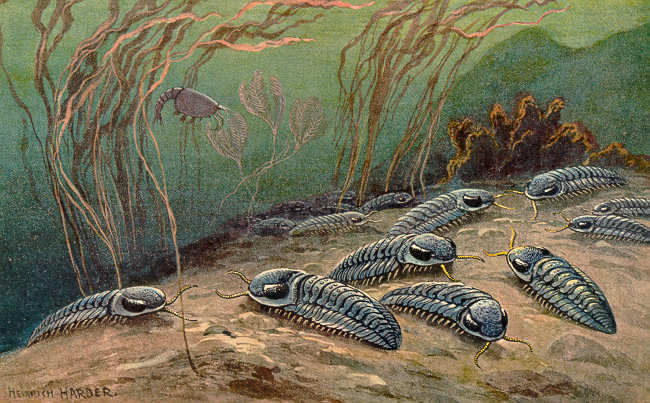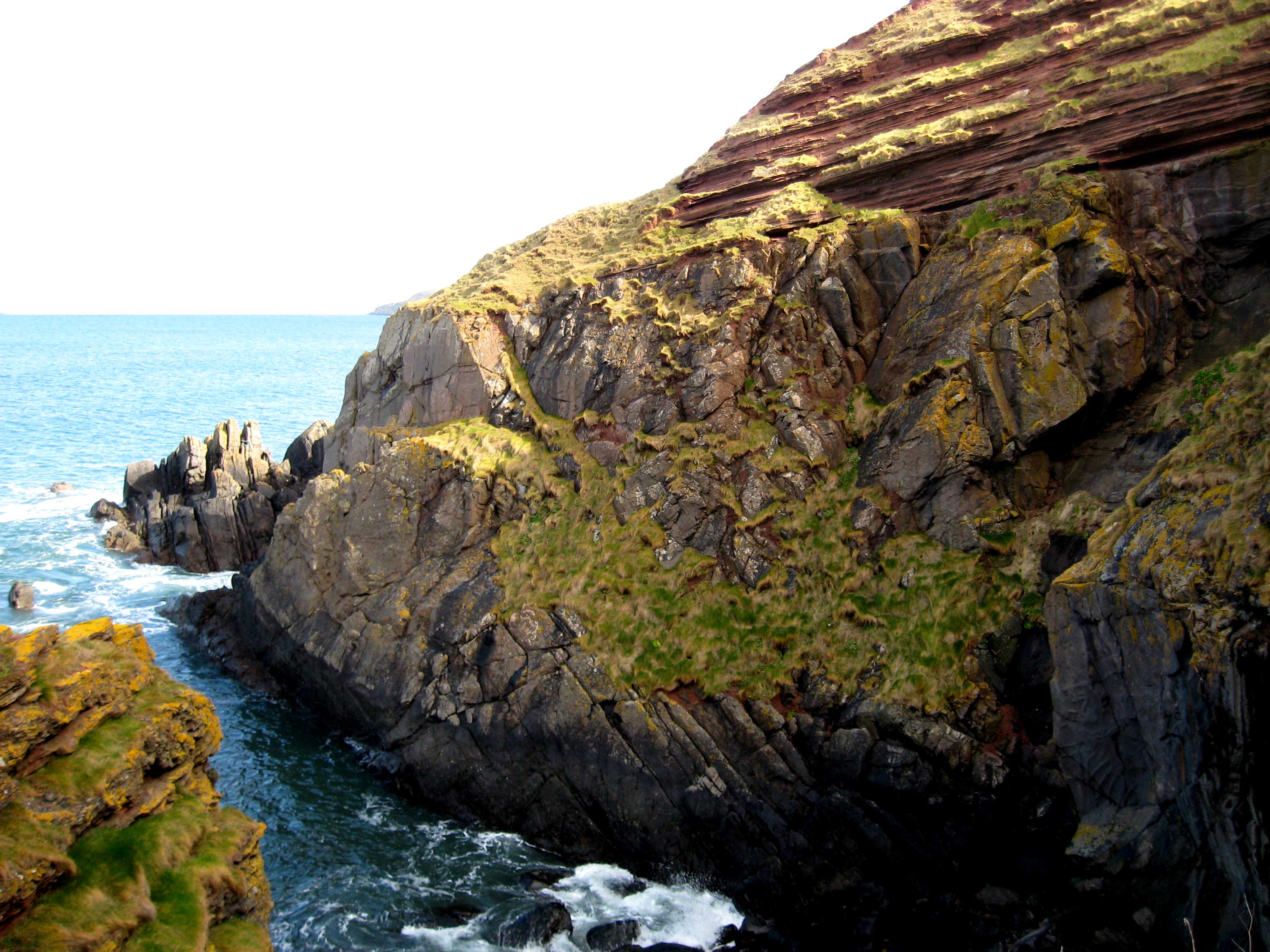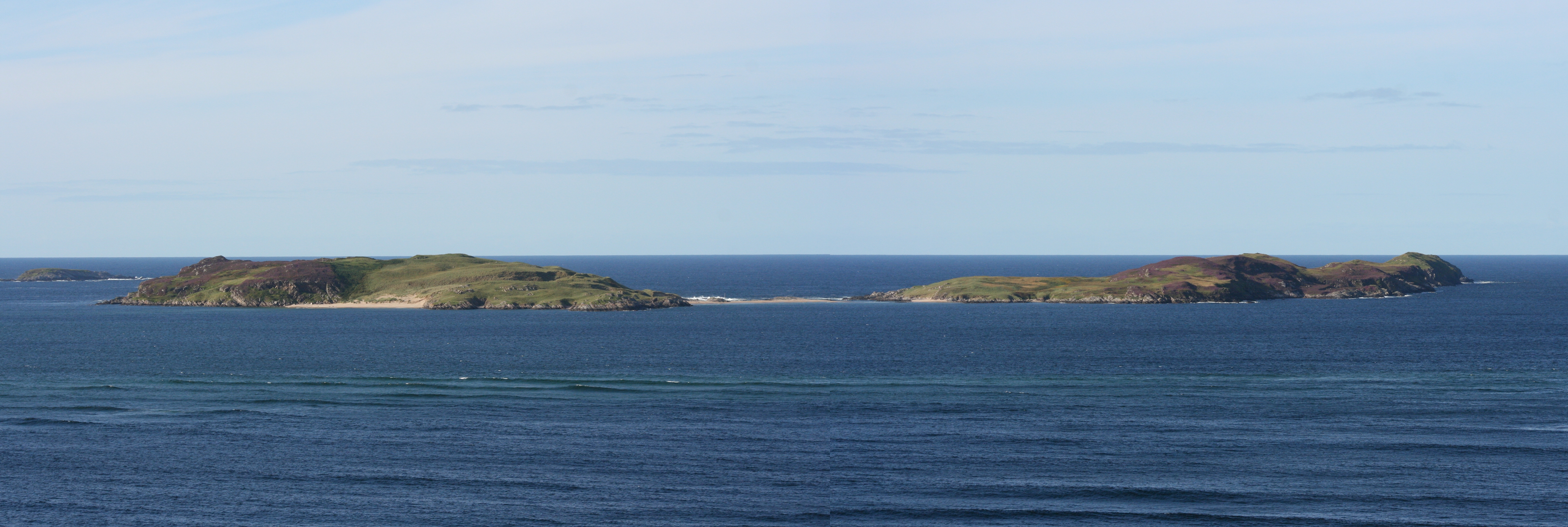|
Cnoc An Fhreiceadain
Cnoc an Fhreiceadain (Hill of Watching or Watch Hill) is a coastal mountain peak in northern Scotland. It is high with commanding views along the north coast of Scotland to Orkney in the east to Durness and Arkle in the West. It lies in the parish of Tongue with the crofting township of Coldbackie at its foot and looks across the Kyle of Tongue and Tongue Bay to the Rabbit Islands. Cnoc an Fhreiceadain is an Old Red Sandstone conglomerate, and dates from the Paleozoic era, around 400 million years ago. In 2004 as part of the BBC's '' Top Gear'' motoring programme, Jeremy Clarkson drove a Land Rover Discovery 3 from sea level to the summit of Cnoc an Fhreiceadain. The programme was criticised by the Mountaineering Council for Scotland for the potential impact of the climb on peat bogs and heather Heather may refer to: Plants *The heather family, or Ericaceae, particularly: **Common heather or ling, '' Calluna'' **Various species of the genus '' Cassiope'' **Various species ... [...More Info...] [...Related Items...] OR: [Wikipedia] [Google] [Baidu] |
Scottish Gaelic Language
Scottish Gaelic ( gd, Gàidhlig ), also known as Scots Gaelic and Gaelic, is a Goidelic language (in the Celtic branch of the Indo-European language family) native to the Gaels of Scotland. As a Goidelic language, Scottish Gaelic, as well as both Irish and Manx, developed out of Old Irish. It became a distinct spoken language sometime in the 13th century in the Middle Irish period, although a common literary language was shared by the Gaels of both Ireland and Scotland until well into the 17th century. Most of modern Scotland was once Gaelic-speaking, as evidenced especially by Gaelic-language place names. In the 2011 census of Scotland, 57,375 people (1.1% of the Scottish population aged over 3 years old) reported being able to speak Gaelic, 1,275 fewer than in 2001. The highest percentages of Gaelic speakers were in the Outer Hebrides. Nevertheless, there is a language revival, and the number of speakers of the language under age 20 did not decrease between the 20 ... [...More Info...] [...Related Items...] OR: [Wikipedia] [Google] [Baidu] |
Tongue Bay
Tongue Bay ( gd, Tunga from non, Tunga) is located in northwest Highland, Scotland, in the western part of the former county of Sutherland. Skullomie is a small fishing and crofting hamlet at the head of the bay, while Melness is a group of crofting townships west of it. Talmine, a crofting and fishing township, is situated on Talmine Bay, an inlet on the western shore of Tongue Bay. The Rabbit Islands are three, uninhabited islands across from the bay; Eilean nan Ròn (island of seals) is at its mouth. From Tongue Bay, the coast extends to the northwest and the east. In general, it is high and rocky, and is intersected by several small creeks. Rocks along the coast are hollowed into caves, or formed into arches and pillars. The tides follow the direction of the coast nearly from east to west. The ''Shamrock'', a 19th-century sloop located within the bay, is protected by Royal Commission on the Ancient and Historical Monuments of Scotland The Royal Commission on the Ancien ... [...More Info...] [...Related Items...] OR: [Wikipedia] [Google] [Baidu] |
Mountains And Hills Of Highland (council Area)
A mountain is an elevated portion of the Earth's crust, generally with steep sides that show significant exposed bedrock. Although definitions vary, a mountain may differ from a plateau in having a limited summit area, and is usually higher than a hill, typically rising at least 300 metres (1,000 feet) above the surrounding land. A few mountains are isolated summits, but most occur in mountain ranges. Mountains are formed through tectonic forces, erosion, or volcanism, which act on time scales of up to tens of millions of years. Once mountain building ceases, mountains are slowly leveled through the action of weathering, through slumping and other forms of mass wasting, as well as through erosion by rivers and glaciers. High elevations on mountains produce colder climates than at sea level at similar latitude. These colder climates strongly affect the ecosystems of mountains: different elevations have different plants and animals. Because of the less hospitable terrain and ... [...More Info...] [...Related Items...] OR: [Wikipedia] [Google] [Baidu] |
The Guardian
''The Guardian'' is a British daily newspaper A newspaper is a periodical publication containing written information about current events and is often typed in black ink with a white or gray background. Newspapers can cover a wide variety of fields such as politics, business, sport .... It was founded in 1821 as ''The Manchester Guardian'', and changed its name in 1959. Along with its sister papers ''The Observer'' and ''The Guardian Weekly'', ''The Guardian'' is part of the Guardian Media Group, owned by the Scott Trust Limited, Scott Trust. The trust was created in 1936 to "secure the financial and editorial independence of ''The Guardian'' in perpetuity and to safeguard the journalistic freedom and liberal values of ''The Guardian'' free from commercial or political interference". The trust was converted into a limited company in 2008, with a constitution written so as to maintain for ''The Guardian'' the same protections as were built into the structure of the ... [...More Info...] [...Related Items...] OR: [Wikipedia] [Google] [Baidu] |
Ericaceae
The Ericaceae are a family of flowering plants, commonly known as the heath or heather family, found most commonly in acidic and infertile growing conditions. The family is large, with c.4250 known species spread across 124 genera, making it the 14th most species-rich family of flowering plants. The many well known and economically important members of the Ericaceae include the cranberry, blueberry, huckleberry, rhododendron (including azaleas), and various common heaths and heathers ('' Erica'', '' Cassiope'', '' Daboecia'', and ''Calluna'' for example). Description The Ericaceae contain a morphologically diverse range of taxa, including herbs, dwarf shrubs, shrubs, and trees. Their leaves are usually evergreen, alternate or whorled, simple and without stipules. Their flowers are hermaphrodite and show considerable variability. The petals are often fused ( sympetalous) with shapes ranging from narrowly tubular to funnelform or widely urn-shaped. The corollas are usually r ... [...More Info...] [...Related Items...] OR: [Wikipedia] [Google] [Baidu] |
Land Rover Discovery
Land, also known as dry land, ground, or earth, is the solid terrestrial surface of the planet Earth that is not submerged by the ocean or other bodies of water. It makes up 29% of Earth's surface and includes the continents and various islands. Earth's land surface is almost entirely covered by regolith, a layer of rock, soil, and minerals that forms the outer part of the crust. Land plays important roles in Earth's climate system and is involved in the carbon cycle, nitrogen cycle, and water cycle. One-third of land is covered in trees, 15% is used for crops, and 10% is covered in permanent snow and glaciers. Land terrain varies greatly and consists of mountains, deserts, plains, plateaus, glaciers, and other landforms. In physical geology, the land is divided into two major categories: mountain ranges and relatively flat interiors called cratons. Both are formed over millions of years through plate tectonics. A major part of Earth's water cycle, streams shape the landsca ... [...More Info...] [...Related Items...] OR: [Wikipedia] [Google] [Baidu] |
Jeremy Clarkson
Jeremy Charles Robert Clarkson (born 11 April 1960) is an English broadcaster, journalist, game show host and writer who specialises in motoring. He is best known for the motoring programmes ''Top Gear'' and ''The Grand Tour'' alongside Richard Hammond and James May. He also currently writes weekly columns for ''The Sunday Times'' and '' The Sun''. Since 2018, Clarkson has hosted the ITV game show ''Who Wants to Be a Millionaire?''. From a career as a local journalist in northern England, Clarkson rose to public prominence as a presenter of the original format of ''Top Gear'' in 1988. Since the mid-1990s, he has become a recognised public personality, regularly appearing on British television presenting his own shows for BBC and appearing as a guest on other shows. As well as motoring, Clarkson has produced programmes and books on subjects such as history and engineering. In 1998, he hosted the first series of '' Robot Wars'', and from 1998 to 2000 he also hosted his own ta ... [...More Info...] [...Related Items...] OR: [Wikipedia] [Google] [Baidu] |
Top Gear (current Format)
Top Gear may refer to: * "Top gear", the highest gear available in a vehicle's manual transmission Television * ''Top Gear'' (1977 TV series), a British motoring magazine programme * ''Top Gear'' (2002 TV series), a relaunched version of the original show * ''Top Gear'' (2011 TV series), a Chinese adaptation * ''Top Gear'' (2014 TV series), another Chinese adaptation * ''Top Gear'' (American TV series), 2010–2016 * '' Top Gear America'', a 2017 series * ''Top Gear Australia, 2008–2012 * '' Top Gear France'', from 2015 * '' Top Gear Italia'', 2016 * ''Top Gear Korea'', from 2011 * ''Top Gear Russia ''Top Gear Russia'' (russian: Top Gear: Русская версия, lit=Top Gear: Russian Version, Top Gear: Russkaya versiya) was a Russian motoring television series that ran on Ren-TV, and was based on the British program ''Top Gear'' prod ...'', 2009 Other uses * ''Top Gear'' (magazine), a British magazine based on the TV show ** ''Top Gear'' (Indian magazine) * ''To ... [...More Info...] [...Related Items...] OR: [Wikipedia] [Google] [Baidu] |
Paleozoic
The Paleozoic (or Palaeozoic) Era is the earliest of three geologic eras of the Phanerozoic Eon. The name ''Paleozoic'' ( ;) was coined by the British geologist Adam Sedgwick in 1838 by combining the Greek words ''palaiós'' (, "old") and ''zōḗ'' (), "life", meaning "ancient life" ). It is the longest of the Phanerozoic eras, lasting from , and is subdivided into six geologic periods (from oldest to youngest): # Cambrian # Ordovician # Silurian # Devonian # Carboniferous # Permian The Paleozoic comes after the Neoproterozoic Era of the Proterozoic Eon and is followed by the Mesozoic Era. The Paleozoic was a time of dramatic geological, climatic, and evolutionary change. The Cambrian witnessed the most rapid and widespread diversification of life in Earth's history, known as the Cambrian explosion, in which most modern phyla first appeared. Arthropods, molluscs, fish, amphibians, reptiles, and synapsids all evolved during the Paleozoic. Life began in the ocean bu ... [...More Info...] [...Related Items...] OR: [Wikipedia] [Google] [Baidu] |
Old Red Sandstone
The Old Red Sandstone is an assemblage of rocks in the North Atlantic region largely of Devonian age. It extends in the east across Great Britain, Ireland and Norway, and in the west along the northeastern seaboard of North America. It also extends northwards into Greenland and Svalbard. These areas were a part of the ancient continent of Euramerica/Laurussia. In Britain it is a lithostratigraphic unit (a sequence of rock strata) to which stratigraphers accord supergroup status and which is of considerable importance to early paleontology. For convenience the short version of the term, ORS is often used in literature on the subject. The term was coined to distinguish the sequence from the younger New Red Sandstone which also occurs widely throughout Britain. Sedimentology The Old Red Sandstone describes a suite of sedimentary rocks deposited in a variety of environments during the Devonian but extending back into the late Silurian and on into the earliest part of the ... [...More Info...] [...Related Items...] OR: [Wikipedia] [Google] [Baidu] |
Rabbit Islands, Scotland
The Rabbit Islands ( ) are a group of three uninhabited small islands off the north coast of Sutherland, Scotland in Tongue Bay. In Scottish Gaelic, and occasionally in English, they are known as Eileanan nan Gall, which is sometimes anglicised as "Eilean-na-Gaeilor "Eilean nan Gaill". Geography and geology The islands' modern name derives from their sandy soil, which favours rabbit burrows and makes their presence particularly obviou They are fairly low lying, slender in shape, and along with the surrounding fjard of Tongue Bay, they show the effects of former glaciation. They are made up of sandstone. The northernmost of the group is called Sgeir an Òir, and there is a natural arch at its north end called "Claigeann na Sgeir" (Bell of the Skerry). They are near Coldbackie, Melness and Talmine on the mainland, and Eilean nan Ròn is to the north east. They are in the parish of Tonguebr> History The islands' older name "Eileanan nan Gall", means "islands of the strangers", or " ... [...More Info...] [...Related Items...] OR: [Wikipedia] [Google] [Baidu] |
Kyle Of Tongue
The Kyle of Tongue ( gd, Caol Thunga) is a shallow sea loch in northwest Highland, Scotland, in the western part of Sutherland. Featuring a rocky coastline, its mouth is formed at Tongue Bay. The community of Tongue is situated on the Kyle's eastern shore and the loch is crossed by the Kyle of Tongue Bridge and Causeway. The sea loch and surrounding countryside is designated as the Kyle of Tongue National Scenic Area, one of the forty such areas in Scotland, which are defined so as to identify areas of exceptional scenery and to ensure its protection from inappropriate development. The designated area covers 24,488 ha in total, of which 21,093 ha is on land, with a further 3396 ha being marine (i.e. below low tide level), and takes in the nearby mountains of Ben Hope and Ben Loyal as well as several small islands and the coastline as far east as Bettyhill. History According to the '' Origines Parochiales Scotiae'', Castle Varrich, an old square tower on a hill ... [...More Info...] [...Related Items...] OR: [Wikipedia] [Google] [Baidu] |








